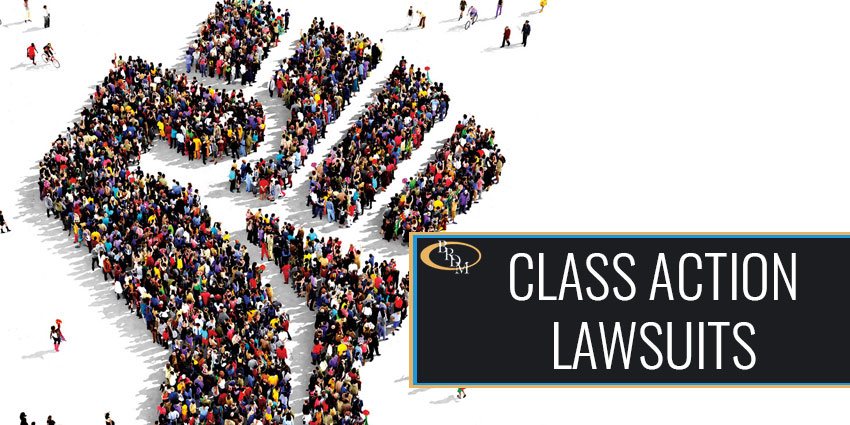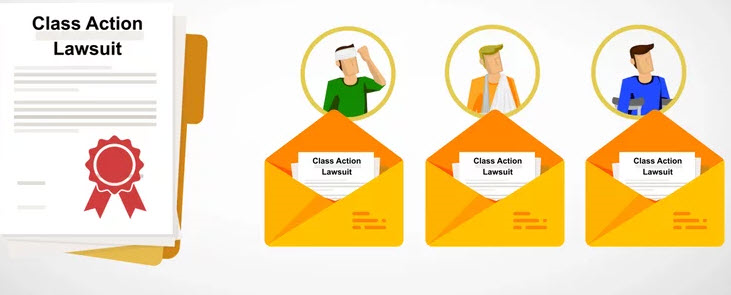Lawful Insight: Navigating the Landscape of Class Action Lawsuit Situations
Wiki Article
Understanding Course Activity Suit: A Guide for Lawyers
Course activity legal actions have ended up being an important component of the legal landscape, enabling the combination of multiple cases right into a single action. For attorneys, comprehending the complexities of course activity litigation is essential in efficiently representing their customers. This detailed guide explores the basics of course activity legal actions, from determining prospective class participants to browsing the accreditation process. Furthermore, it digs into vital techniques for managing class action lawsuits and gives insights into getting and discussing authorization for settlements. By delving into the ins and outs of course action legal actions, this guide equips legal representatives with the expertise and tools needed to efficiently browse this intricate location of legislation.The Essentials of Class Action Legal Actions
Class action claims are a lawful mechanism utilized to settle similar insurance claims from a team of individuals into a solitary lawsuit, offering a cost-efficient and reliable method to looking for justice and resolution. This kind of lawsuit enables a depictive plaintiff, acting on behalf of the whole course, to bring a claim against a defendant who has allegedly caused damage or breached the legal rights of numerous individuals.The standard needs for bringing a class action lawsuit consist of numerosity, commonness, typicality, and adequacy of depiction. Numerosity refers to the reality that the class must be so huge that joinder of all participants would be not practical.
Course action lawsuits can be helpful for both accuseds and plaintiffs. For complainants, it enables them to merge their sources and share the risks and prices related to lawsuits. When they are up versus big companies or entities, it likewise offers a degree playing field. For defendants, it uses the chance to effectively resolve multiple claims in a solitary claim, preventing the demand to resist numerous private legal actions.
Identifying and Assessing Potential Course Participants
After establishing the standard requirements for a class action lawsuit, the following step is to identify and assess possible course members. If they meet the necessary criteria., this process includes identifying that might be part of the course and assessing their claims to establish.To recognize potential course participants, attorneys commonly conduct extensive study and gather relevant info. This might include evaluating documents, conducting meetings, and examining documents to recognize individuals or entities that might have been influenced by the alleged misdeed. It is critical to develop a detailed and clear list of prospective course participants to ensure that all affected events are included in the legal action.
When potential course members have been identified, the following action is to evaluate their claims. If they satisfy the legal requirements for course qualification, this entails examining the merits of each private insurance claim to identify. Attorneys should very carefully assess the truths, proof, and legal concepts of each prospective class participant's claim to guarantee that they have a sensible situation.
Evaluating prospective course participants additionally includes determining whether they satisfy the course meaning and have experienced comparable damage as an outcome of the offender's actions. This requires comparing the facts and circumstances of each possible class member's circumstance to the claims and legal theories put forth in the suit.
Navigating the Class Qualification Process
To successfully browse the course accreditation process, attorneys need to vigilantly follow the procedural demands established forth by the court. Class accreditation is a vital action in a class action lawsuit, as it identifies whether a situation can proceed as a class activity, standing for a group of individuals who have comparable claims versus an offender. The process entails satisfying particular standards, such as numerosity, commonality, typicality, and adequacy of representation.First of all, attorneys need to develop numerosity by demonstrating that the course is so huge that individual joinder is unwise. This calls for a comprehensive analysis of the insurance claims and defenses included.
Next, legal representatives must show typicality, which suggests that the representative complainant's cases are regular of the insurance claims of the course members. This ensures that the interests of the depictive plaintiff straighten with the interests of the course. Legal representatives must show adequacy of depiction, implying that the depictive complainant and their guidance will rather and appropriately represent the passions of the class.
To navigate this process efficiently, attorneys should thoroughly prepare by conducting considerable study, gathering evidence, and creating a compelling disagreement that satisfies each of these standards. They must also be prepared to respond to any difficulties or arguments raised by the defendant. By faithfully sticking to the step-by-step demands established forth by the court, lawyers can enhance their possibilities of acquiring class qualification and progressing the interests of the class members.

Secret Approaches for Managing Course Activity Lawsuits
Upon effectively navigating the class accreditation process, legal representatives have to after that execute vital strategies for efficiently taking care of course activity lawsuits. These techniques are essential to ensure that the instance continues efficiently and successfully, inevitably making the most of the possibilities of a positive result for the class members.
One secret method is to develop a strong and cohesive legal group (Class action lawsuit). This includes putting together a group of lawyers with experience in course activity lawsuits, in addition to various other relevant locations such as see post the specific industry or subject issue associated with the case. A well-rounded group can bring various viewpoints and abilities to the table, boosting the general performance of the litigation
Another vital approach is to develop a comprehensive and well-thought-out lawsuits strategy. This plan needs to describe the general objectives of the situation, along with the details lawful theories and arguments that will be gone after. It should likewise include a timeline and spending plan to make sure that the situation remains on track and within the allocated resources.
Furthermore, legal representatives need to actively engage with the class participants throughout the litigation procedure (Class action lawsuit). This consists of offering regular updates on the progression of the case, seeking input and feedback from the course participants, and attending to any questions or worries they may have. By fostering open communication and collaboration, lawyers can build trust and assistance amongst the course participants, which can be important in accomplishing a successful resolution
Settling Course Activity Claims: Arrangement and Approval
When it comes to clearing up course activity claims, effective settlement and acquiring approval are necessary action in achieving a resolution. Course activity claims are intricate and entail a multitude of complainants, making it essential to get to a settlement that is adequate and fair to all celebrations involved.
Once a negotiation arrangement is gotten to, it should be approved by the court. The court's duty in this process is to make sure that the negotiation is reasonable, sensible, and appropriately protects the interests of the course participants. The court will certainly think about elements such as the nature of the cases, the toughness of the evidence, the possible recuperation for the class members, and any kind of arguments elevated by course members.
Acquiring court approval is vital as it supplies finality to the negotiation and shields the interests of the class members. It makes sure that the settlement is binding and enforceable, Get More Info and course members can obtain their rightful settlement.
Final Thought

Course activity legal actions have actually become an essential part of the lawful landscape, permitting for the consolidation of several claims into a solitary action. Course certification is a crucial action in a course action lawsuit, as it establishes whether a case can proceed as a class action, standing for a group of people that have comparable cases versus an offender. By faithfully read sticking to the procedural requirements set forth by the court, lawyers can raise their opportunities of getting course certification and advancing the interests of the course participants.
The court will think about elements such as the nature of the claims, the strength of the proof, the possible recovery for the class participants, and any type of arguments elevated by course participants.
By recognizing and analyzing potential class members, attorneys can determine the stability of a class action legal action.
Report this wiki page